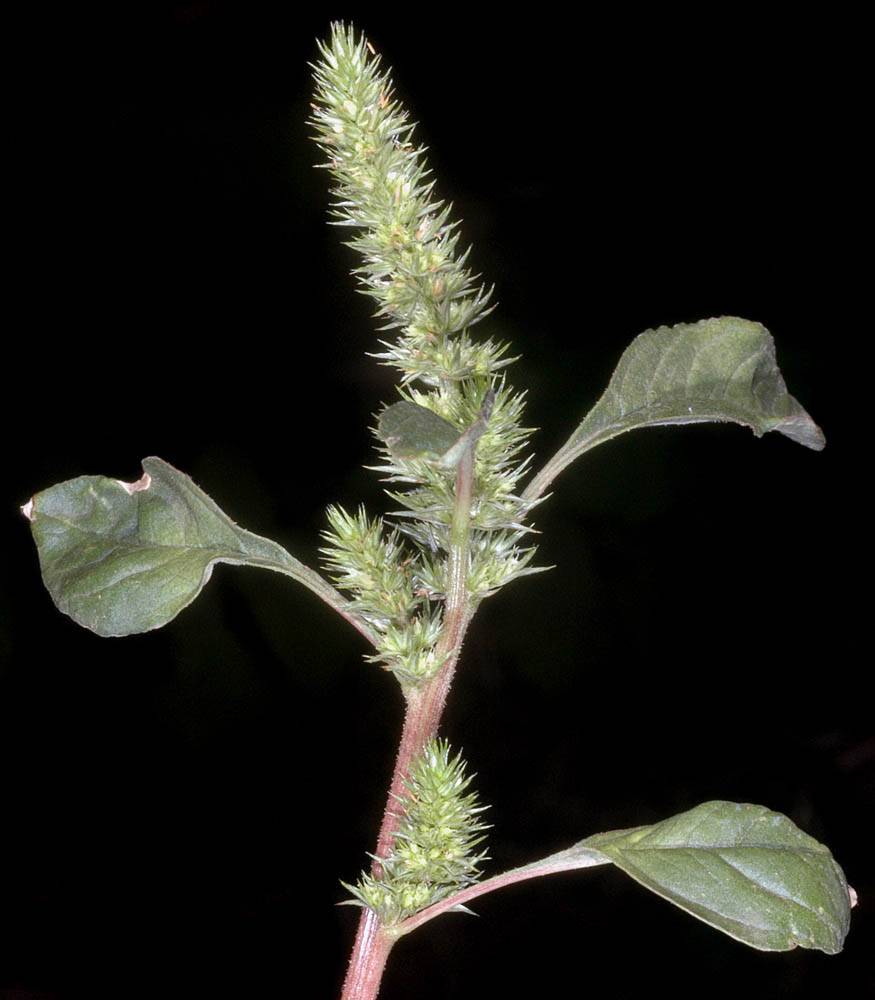Amaranthus muricatus
Amaranthus powellii
Powell's amaranth
erect, branched or not, 2.5–15(20) dm, green or reddish purple.
blades rhombic-ovate to broadly lanceolate, 3–6(8) cm, bases wedge-shaped;
margins entire; flat to undulate;
midveins extending to a short spine;
tips obtuse to cuneate;
petioles ? blade, 3–6 cm.
mostly terminal, sometimes axillary; rigid-erect panicles with few branches, green to pale green;
bracts numerous, lanceolate to awl-shaped, 4–7 mm.
perianth segments 3–5, similar in staminate and pistillate flowers; erect, not overlapping or reflexed, broadly linear to lanceolate;
midveins extending to a spine;
tips acute.
perianth segments unequal to subequal, generally at tips of inflorescences;
stamens 3–5.
perianth segments 1.5–3.5 mm;
styles 3, spreading.
subglobose to ovoid, 2–3 mm; smooth to slightly rugose at tips; dehiscence circumscissile.
subglobose to lenticular, 1–1.4 mm; black; shiny.
=32, 34.
Amaranthus muricatus
Amaranthus powellii
Fields, disturbed areas, roadsides, streambanks. Flowering Jun–Oct. 50–1900 m. BR, Casc, Col, CR, ECas, Lava, Owy, Sisk, WV. CA, ID, NV, WA; nearly worldwide. Native.
Bridget Chipman
- Local floras:
BC,
CA,
OR,
WA
- Local Web sites:
CalFlora,
CalPhotos,
Flora NW,
PNW Herbaria
WildflowerSearch
iNaturalist (observations)
USDA Plants Database
- LBJ Wildflower Center
- SEINet
- Plants of the World Online
- Encyclopedia of Life
- Wikipedia
- Google Image Search



